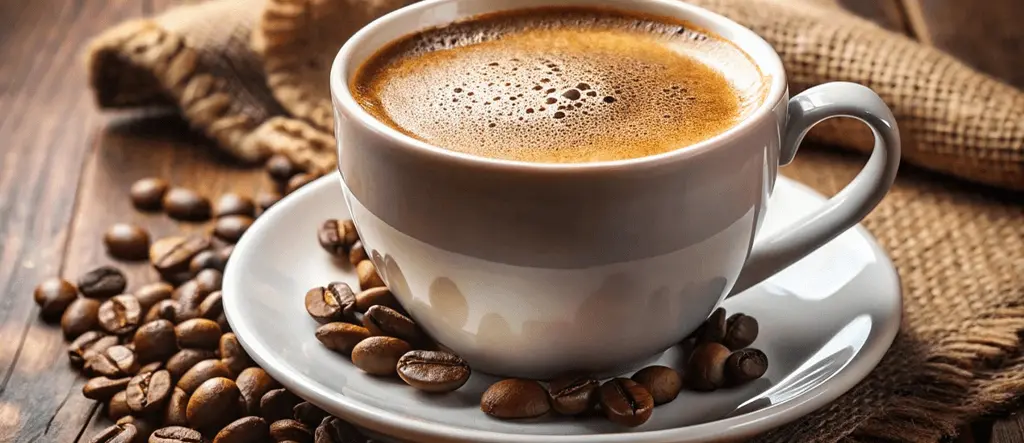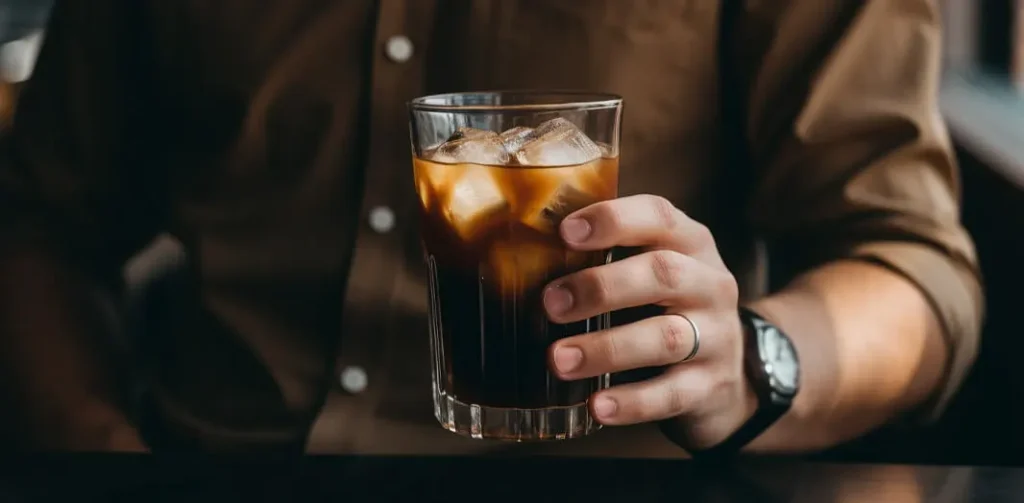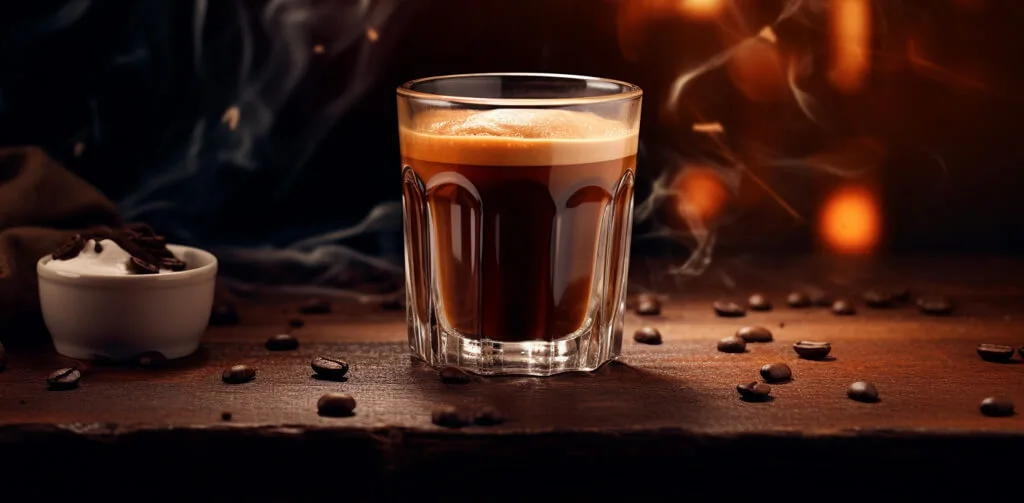Looking for a coffee that packs a punch in taste but is lighter on bitterness? A significant number of people crave a potent coffee that doesn’t come with a rough aftertaste. Ristretto could very well be the match you’re seeking.
This espresso-based drink delivers a rich flavor profile many coffee enthusiasts long for.
Ristretto is prepared by using reduced water compared to a standard espresso, forming a denser shot. This article serves as a tool assisting you to comprehend what sets Ristretto apart, the methods to prepare it, and how it contrasts with other types of coffee.
Moreover, we’ll examine the role of bean quality and common errors during brewing.
Eager to uncover more?
Understanding Ristretto
Ristretto, a concentrated shot of espresso originating from Italy, offers a unique flavor and intensity distinct from standard espresso. It differs in its extraction process by using less water and finely ground beans, resulting in a more potent liquid with heightened bitterness.
Definition and Origin
Ristretto translates to “restricted” in Italian, showcasing its unique brewing method that limits the amount of water used. This espresso variant focuses on delivering a more concentrated coffee shot by using finely ground beans and halving the water volume typical of standard espressos.
Originating from Italy’s rich coffee culture, it has become a favorite among those desiring an intense flavor without the bitterness often found in longer extractions.
A ristretto is essentially an espresso shot made under tighter constraints to highlight its robust flavors.
How It Differs from Standard Espresso
Ristretto distinguishes itself from traditional espresso by emphasizing a richer, more condensed shot. This outcome is a result of using less water while maintaining finely ground coffee, which minimizes the extraction period to a brief 15 to 20 seconds.
Consequently, this beverage offers a more potent coffee tang without any extra bitterness, setting it apart from standard espresso shots.
Traditional espressos tend to occupy more of your cup and require an extended preparation time. They utilize more water, which has the potential to dilute the powerful flavors that coffee aficionados appreciate in ristretto.
By lessening the quantity of water in ristretto, baristas produce a shot that’s not just shorter but also more full-bodied and sweeter tasting compared to its more extensive espresso alternative.
This technique underlines why many find ristretto appealing for its strong flavor characteristics despite its less voluminous size.
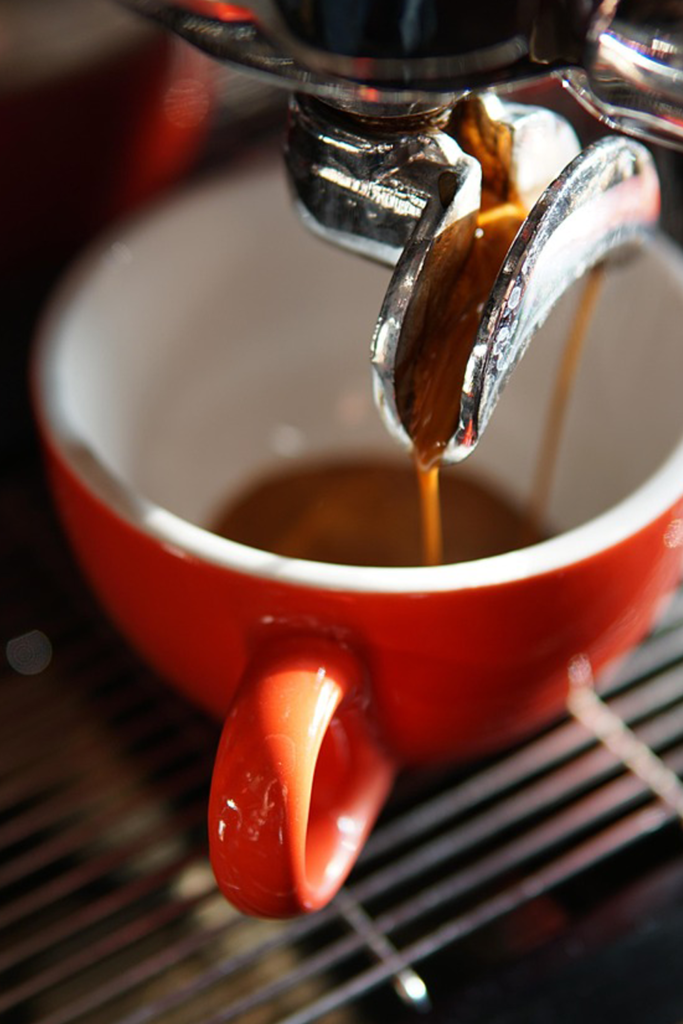
The Making of a Ristretto
To make a Ristretto, you need specific equipment and follow a step-by-step brewing process. The result is a concentrated shot of espresso with intense flavor and less water.
Equipment Needed
Making a ristretto requires specific equipment to achieve its intense flavor and concentrated shot. Here’s what you’ll need:
- Espresso machine – A quality espresso machine is crucial for controlling water pressure and temperature.
- Coffee grinder – A grinder that can produce a fine grind is essential, as ristretto uses finely ground beans.
- Fresh coffee beans – Opt for high-quality beans to extract the best flavor and aroma.
- Tamper – You need a tamper to evenly press the coffee grounds in the portafilter.
- Portafilter – This holds the coffee grounds during extraction.
- Scale – Use a scale to measure the exact amount of coffee grounds required.
- Timer – Timing the extraction process ensures you get a perfect ristretto shot.
- Demitasse cup – Serve your ristretto in a small cup designed for espresso-based beverages.
Step-by-Step Brewing Process
To make a ristretto, follow these steps:
- Grind the coffee beans finely to achieve a consistency similar to powdered sugar.
- Place the finely ground coffee into the portafilter and tamp it down firmly using even pressure.
- Lock the portafilter into the espresso machine and start the extraction, allowing hot water to pass through the coffee grounds for 15 to 20 seconds.
- Watch for the initial dark, syrupy liquid that emerges from the spout, indicating that the ristretto is being properly brewed.
- Stop the extraction when you have produced about 0.75 ounces of this concentrated liquid, which should exhibit a rich crema on top.
Attention to detail and precision are crucial for achieving a perfect ristretto shot every time.
Ristretto vs. Other Espresso Variants
Ristretto provides a more intense flavor and aroma than its counterparts, including Espresso, Lungo, and Americano. Moreover, it delivers a concentrated shot with less water but heightened richness.
Comparison with Espresso, Lungo, and Americano
Here is how Ristretto compares with Espresso, Lungo, and Americano in terms of brewing process, flavor, aroma, and caffeine content. This information guides buyers into making an informed choice based on their preference for coffee strength and taste.
| Drink | Brewing Process | Flavor and Aroma | Caffeine Content |
| Ristretto | Finely ground beans, less water, extracted in 15-20 seconds. | More intense flavor and sweeter, less bitterness. | Comparable to espresso but in a smaller volume. |
| Espresso | Finely ground beans, more water, extracted in 20-30 seconds. | Strong flavor, but more balanced than Ristretto. | Higher due to larger volume. |
| Lungo | Finely ground beans, even more water, extracted over 30-40 seconds. | Less intense, more diluted than Espresso. | Slightly higher than Espresso due to more water. |
| Americano | Espresso shot added to hot water. | Milder flavor compared to straight Espresso. | Depends on the ratio of water to Espresso used. |
Each coffee type offers a unique experience. The Ristretto provides a concentrated flavor for those who love a strong coffee taste. Espresso balances intensity and volume. Lungo extends the coffee experience with a milder taste. Americano offers a diluted version for those preferring less intensity. Buyers should consider their flavor preference and desired caffeine kick.

Impact on Flavor and Aroma
Ristretto impacts flavor and aroma by offering a more intense, concentrated taste compared to standard espresso. The shorter extraction time and finer coffee grind produce a robust and less bitter profile, creating a richer sensory experience for enthusiasts seeking bold coffee flavors.
This results in a beverage with higher intensity, showcasing the intricate layers of the beans’ natural complexity and enhancing the overall aromatic experience.
Differences in Caffeine Content
Ristretto contains less caffeine than standard espresso due to the shorter extraction time and reduced water volume. A ristretto shot typically has around 34 milligrams of caffeine, while a standard espresso shot contains approximately 63 milligrams.
The concentrated nature of a ristretto results in a bolder flavor with less bitterness, offering an appealing option for those seeking a robust coffee experience without the higher caffeine content found in regular espresso.
The Importance of Bean Quality and Grind
Bean quality and grind significantly influence the flavor and intensity of a ristretto, making it crucial to select the right bean type and ensure consistent grind. The choice of beans and their even grinding directly impacts the concentrated shot’s aroma, creating an intense coffee experience for enthusiasts.
Type of Bean
Ristretto’s intense flavor is influenced by the type of bean used. Opt for a dark roast, like Robusta or Arabica, to enhance the drink’s intensity and rich aroma. The finely ground beans used in ristretto brewing contribute to its concentrated nature, enriching the beverage with bold flavors and creating a unique coffee experience.
Grind Consistency
Grind consistency is a crucial aspect when crafting a ristretto. The grind size of the coffee beans affects the extraction process, impacting flavor and strength. Finely ground beans are essential for achieving the desired results when brewing a ristretto, ensuring an intense and concentrated shot.
The type of bean used also influences the grind consistency. It is imperative to select high-quality coffee beans and finely grind them to achieve the perfect texture for extracting the rich flavors that characterize a ristretto.
This attention to detail in grinding contributes significantly to the overall quality of the beverage, enhancing its distinct characteristics and satisfying those seeking a robust coffee experience.
Common Mistakes in Making Ristretto
When making Ristretto, avoid over-extracting or under-extracting the coffee, and ensure the grind size is correct. Use finely ground beans to achieve a concentrated shot with intense flavor.
Over-Extraction and Under-Extraction
Overdoing and underdoing the extraction when making ristretto can yield undesirable flavors. Overdoing occurs if the brewing process extracts too much coffee, leading to a bitter taste.
On the other hand, underdoing results in an acidic or sour flavor due to insufficient extraction time.
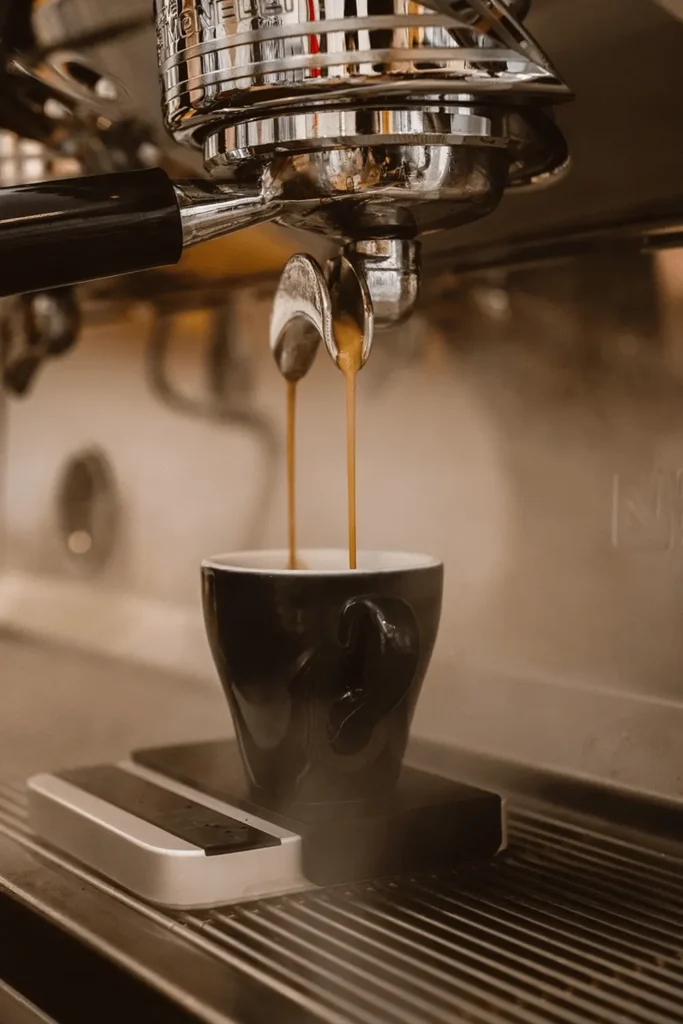
When making ristretto, it is crucial to avoid overdoing or underdoing the extraction as this affects the drink’s taste. The brewing process should be carefully timed to prevent over- or under-brewing and achieve the desired intense yet balanced flavor without bitterness or acidity.
Incorrect Grind Size
Incorrect grind size can significantly impact the quality of a ristretto. The grind for a ristretto needs to be finely ground, similar to powdered sugar, ensuring a smooth extraction process.
If the grind is too coarse, it can result in an under-extracted and weak flavor lacking the characteristic intensity of a ristretto. Conversely, if the grind is too fine, it may lead to over-extraction and bitterness due to extended contact between water and coffee during brewing.
Achieving the correct grind size is crucial as it directly affects the balance of flavors in this concentrated espresso variant.
The incorrect grind size should not be underestimated; it has a direct impact on the final taste profile. A finer ground produces intense and rich flavors while coarser grinding leads to weaker extraction resulting in suboptimal taste experiences that deviate from the essence of a perfectly brewed ristretto shot.
Wrapping Up
Ristretto, a concentrated and flavorful form of espresso, delivers a more intense coffee experience. Its shorter extraction time and finely ground beans create a drink with reduced bitterness and a bolder flavor.
Understanding the preparation process allows one to value the practicality and efficiency of brewing ristretto at home or in a coffeehouse. By highlighting its impact on flavor intensity and caffeine content, we underscore the significance of this Italian beverage in the realm of espresso-based drinks.
Exploring additional resources or seeking guidance to perfect ristretto brewing encourages ongoing learning beyond this article. Dive into the world of ristretto to unveil its secrets, enriching your coffee experience with firsthand knowledge.


